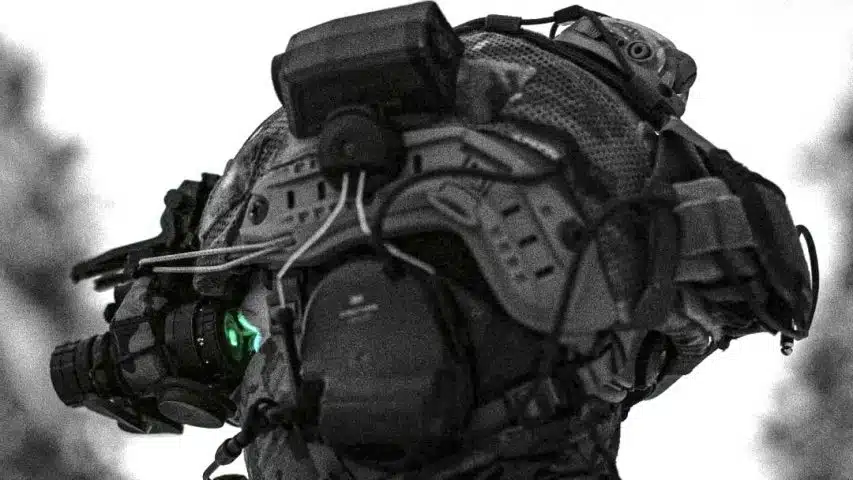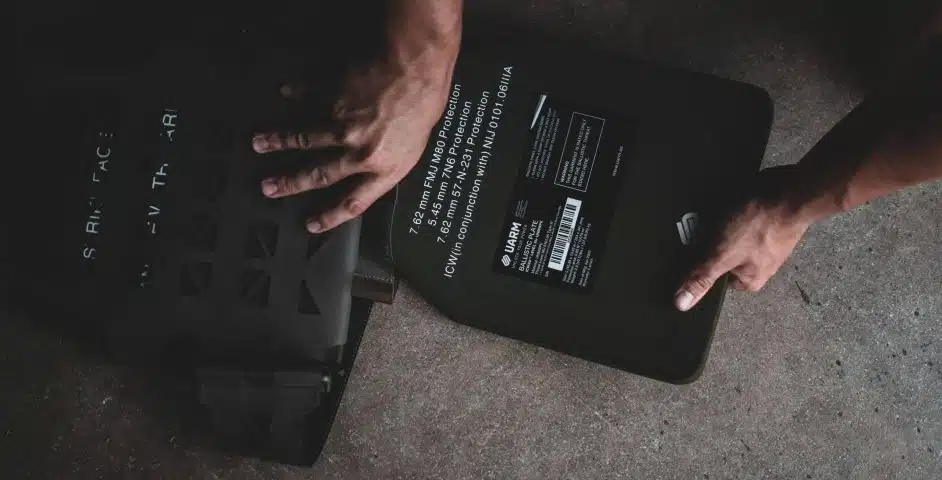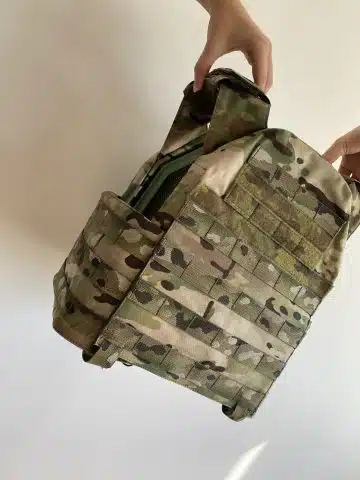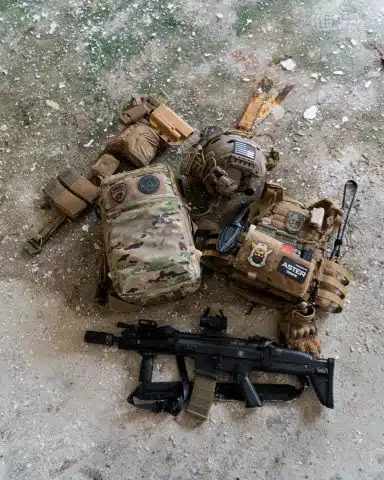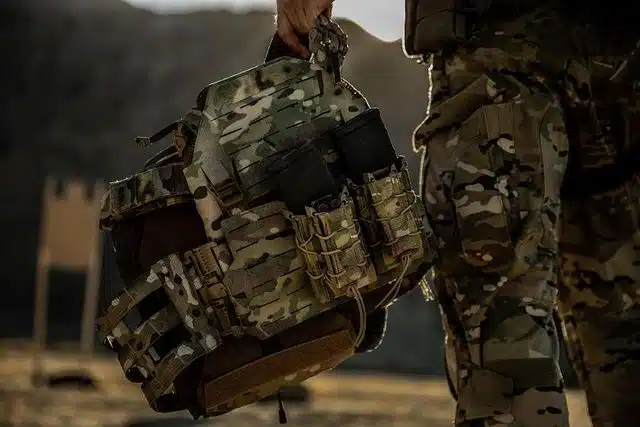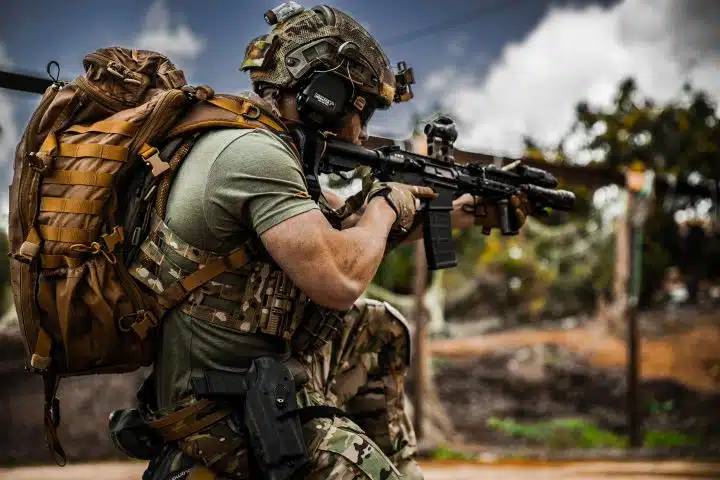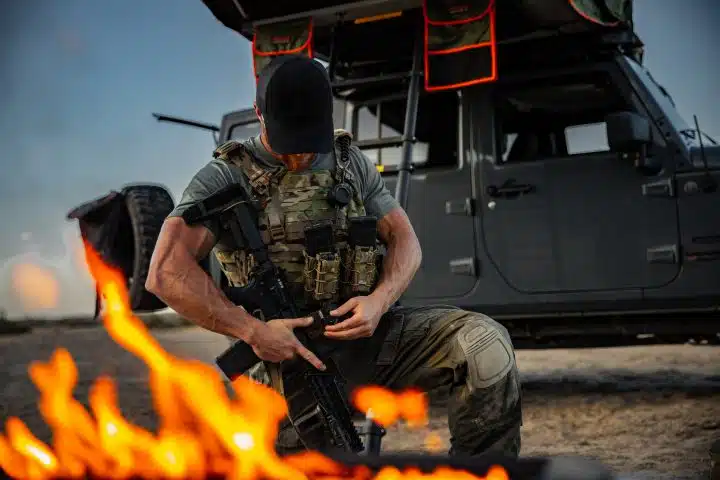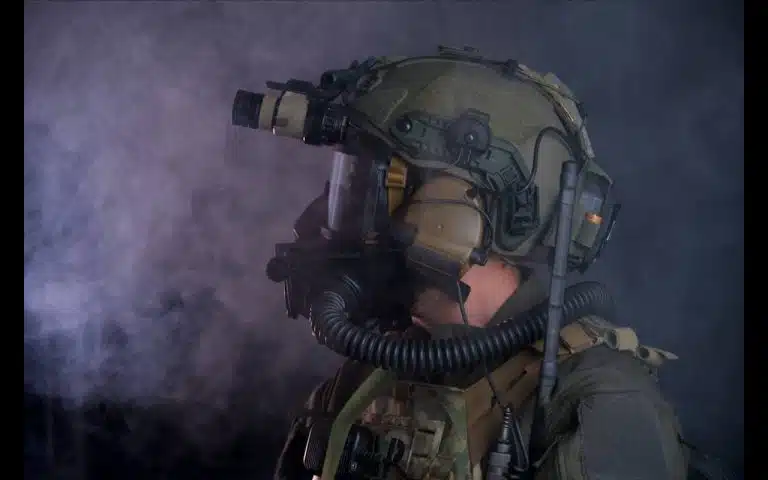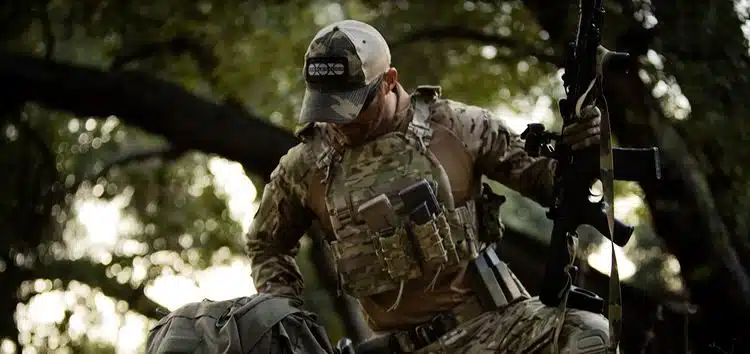Every veteran and even every person who ever passed a march at BCT knows how heavy the equipment gets. In most cases, you need to carry everything for miles, on foot. Without proper balance, this would be impossible. And that is there MOLLE comes in, it is a type of modular binding that helps attach additional gear to your basic pack or body armor.
It is a tried and tested method of attaching equipment used by the Armed Forces in Iraq and Afghanistan, first via the Interceptor Body Armor (IBA) and currently on the Improved Outer Tactical Vest. While some manufacturers tried to step away from the MOLLE system, no better system has yet to be invented.
In its core, MOLLE is very simple in its genius. It is a system where every part of the equipment can be attached to another one without an increase in weight. This is done by interweaving horizontal and vertical straps. The system is often called MOLLE webbing, even though the official name is ‘Pouch Attachment Ladder System’, or PALS.

Many people mistake these two types of webbing as being separate from each other. In simplest terms, MOLLE refers to the system of equipment used by the Armed Forces, while the webbing itself is PALS. Together, they allow you to attach your gear around your vest tightly and securely, as if they are one piece.
In the end, every person can have an ideal balance and be able to carry much more without straining their back, shoulders, or hips.
While it takes some time to attach and detach modules from your backpack or body armor, once it is up nothing will ever fall off.
This advancement is not an army standard for all NATO troops. But, it is also very useful when hunting, camping, or in any job where you want your equipment to be handy at all times. From medical kits to ammo and water pouches, everything can be attached.
Modular Lightweight Load-carrying Equipment – MOLLE
Pronounced like the name ‘Molly’, this type of gear has many more applications than just looking nice. It weighs basically nothing and is often simply the top layer of fabric on existing equipment. And it is as easy as waving a basket in preschool.
It has three major benefits compared to another way of attaching gear:
- It is modular and can adapt to any type of mission
- The weight of your gear will not increase
- It is as firmly attached as if your gear is all one piece
As far as modular advantages go, it is most similar to Velcro. You have multiple fields where you can start binding your equipment, and it will always be on the height you prefer. But, unlike Velcro, it won’t come off unless ripped off by a force capable of tearing the external carrier itself apart.
Any other type of binding needs cords and zippers, in the best-case scenario. While these might not seem like heavy, those ounces add up. Even just a pound of added weight could be used for something better, like water.
Finally, not everyone has the same balance and the same carrying capacity. Unlike non-MOLLE full backpacks, you can change where your gear sits to fit your preference. Or you might give whole modules to someone else to carry if you are being fatigued.

Other Benefits of MOLLE Gear
Different to non-modular gear, MOLLE is not restricted to only the bulletproof vest. With the same design, you can attach the PALS strips to backpack, shoulders, or any vehicle that has this feature integrated.
In civilian situations, MOLLE can be used on dogs and pack animals to either help them carry some of the equipment or utility features, like flashlights.
Additionally, MOLLE attachments can be used to connect gear to itself. While this might not sound important, it gives exceptional advantages when making camp. You can use equipment as anchors and tie it together without using a cord to protect your valuables from bad weather.
Body Armor Applications
Both soft body armor and hard plate carriers often come with a MOLLE pattern on the front, back, and sides. This means that for users of this armor the backpack is optional. Often you can carry everything you want by placing pouches and holsters to the MOLLE body armor.
By using MOLLE body armor you can relieve your belt and hips. You can also place different tools to be more accessible. Placing a side-arm holster to your chest will reduce the draw speed significantly, and remove any risk of someone taking your handgun if tackled from the back.
For jobs like paramedics and first responders, having a MOLLE body armor means that their full gear can be attached to their external carrier. This reduces the response time in action and makes it next to impossible to forget taking something that you might need.
Attaching to MOLLE
Although basket weaving is not mandatory for an Eagle Scout merit badge, it is the exact skill used when attaching MOLLE. Over-under and pull, and the same are repeated until you reach the end.
The process is quite simple but requires some time to perfect. Only limited finger dexterity is needed to connect two parts, as well as a bit of patience.
- First, you need to empty all of the containers and remove the hard plate from the external carrier. While not strictly necessary, this will make everything much easier.
- Pull out the straps on the part you want to attach and pass each strap through the first loop where you want the top to be.
- Return the strap and pull the straps through the loops that are on the part you want to attach. DO NOT go straight down through the carrier, but weave every loop on each side.
- Do each strap one by one and pull once all are on the same level. Wiggle the attaching pouch a bit to see if there is any space, then pull some more. Repeat this for as many loops there are on the part you want to attach.
- Use the Velcro tape or button on the end to keep the final part of the strap in place.
Once you are done you will notice that there is no space for the attachment to move and that it is firmly in place with no bouncing or wiggling. If you notice a bounce that means that you have missed one or several loops and that you will need to untie the MOLLE attachment and go again.
Taking Gear Off
To remove an attachment from a MOLLE backpack or body armor, you will need to do the attachment process backward. But, there is a trick to make this go faster.
For the first set of loops use your thumbs to push the hard part with the button back through the loop. Then pull with both hands away from the carrier.
Next, switch fingers and use your index to slide under the loop and pull it out as you would when removing shoelaces from a boot. Remember that one set goes upward and the other one downward.
This way you can remove a MOLLE attachment it just a couple of seconds, provided that you are not working on yourself.
Best Practices
Your body armor and backpack will be balanced on their own, but not in relation to each other. If you have a heavier NIJ Level III or IV armor this will not make a difference, but it will for IIIa and lighter.
The best way to know if you are balanced is to test it. You can attach just the top loop and test the weight. Once you find what works in your situation, lace it up entirely. Make certain that all of the pouches, holsters, and other attachments are taken into consideration.
Generally, you will want the ratio of front and back to be as close as possible to 1 to 4, if you are carrying a rifle. A more balanced ratio is better if you don’t plan on running and only have a sidearm.

Conclusion
Every person who has ever needed to go into action under full gear is amazed by the invention of MOLLE attachments. They have become a standard for a reason, as there is no better solution for carrying diversified equipment.
If you know how to attach your MOLLE gear correctly you will quickly find out why you will never go back. It is lighter, tighter, and gives you access to your utility gear like no other feature our there.

